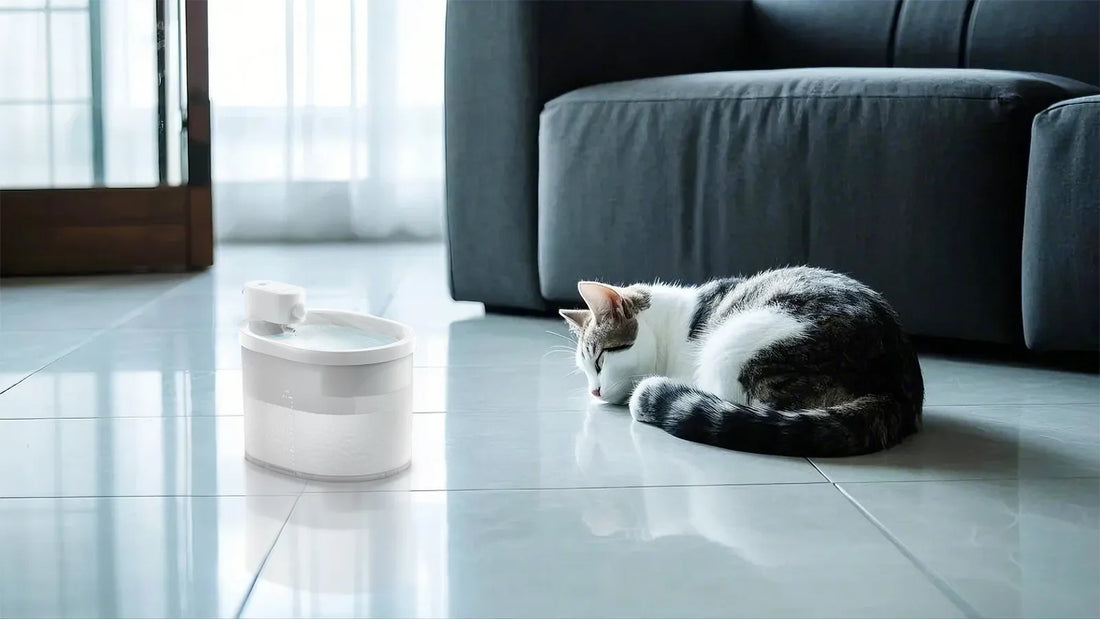Gnats in cat water fountains can be a frustrating and unsanitary issue for pet owners. These tiny insects are not only annoying but can also pose health risks to your feline friend. Understanding why gnats are attracted to cat water fountains and how to address the problem is essential for maintaining a clean and safe environment for your pet.
Why Are Gnats Attracted to Cat Water Fountains?
Gnats are naturally drawn to moisture and organic matter, making cat water fountains an ideal breeding ground. The stagnant water in fountains, combined with any food particles or debris, creates a perfect environment for gnats to thrive. Additionally, the warmth of the water can accelerate the growth of bacteria and algae, further attracting these pests.
Health Risks Associated with Gnats in Cat Water Fountains
While gnats themselves are not directly harmful to cats, they can carry bacteria and parasites that may contaminate the water. Consuming contaminated water can lead to gastrointestinal issues, infections, or other health problems in your pet. Moreover, the presence of gnats can cause stress and discomfort for your cat, affecting their overall well-being.
How to Prevent Gnats in Cat Water Fountains
Preventing gnats from infesting your cat's water fountain requires a combination of regular maintenance and proactive measures. Here are some effective strategies:
- Clean the Fountain Regularly: Wash the fountain thoroughly at least once a week using mild soap and warm water. Pay special attention to crevices and hard-to-reach areas where debris can accumulate.
- Replace Water Frequently: Change the water in the fountain daily to prevent stagnation and reduce the risk of bacterial growth.
- Use a Fountain with a Filter: Opt for a fountain equipped with a filter to trap debris and impurities, making the water less appealing to gnats.
- Keep the Area Clean: Ensure the surrounding area is free from food crumbs, spills, and other organic matter that may attract gnats.
- Consider Natural Repellents: Certain essential oils, such as peppermint or eucalyptus, can deter gnats. However, ensure they are safe for use around cats.
Effective Solutions for Eliminating Gnats
If gnats have already infested your cat's water fountain, it's important to take immediate action to eliminate them. Here are some proven methods:
- Deep Cleaning: Disassemble the fountain and clean all components with a vinegar solution to remove any gnat eggs or larvae.
- Boiling Water: Pour boiling water into the fountain to kill any remaining gnats or eggs. Allow it to cool before reassembling and refilling.
- Traps: Set up gnat traps near the fountain using apple cider vinegar or dish soap to capture and eliminate adult gnats.
- Professional Pest Control: If the infestation persists, consult a pest control expert for safe and effective treatment options.
Choosing the Right Cat Water Fountain
Selecting a high-quality cat water fountain can significantly reduce the likelihood of gnat infestations. Look for features such as:
- Easy-to-Clean Design: Choose a fountain with minimal components and smooth surfaces to simplify cleaning.
- Built-in Filters: Opt for models with replaceable filters to keep the water clean and free from debris.
- Stainless Steel or Ceramic Materials: These materials are less prone to bacterial growth compared to plastic.
- Adjustable Flow Settings: Fountains with adjustable flow rates can help maintain water freshness and reduce stagnation.
Maintaining a Gnat-Free Environment
Beyond the water fountain, maintaining a clean and hygienic environment is crucial for preventing gnat infestations. Regularly clean your cat's feeding area, dispose of waste promptly, and ensure proper ventilation to reduce humidity levels. By taking these steps, you can create a healthier and more comfortable space for your pet.
Gnats in cat water fountains are a common issue, but with the right knowledge and tools, you can easily keep them at bay. By implementing regular cleaning routines, using preventive measures, and choosing the right fountain, you can ensure your cat has access to clean and safe water. Don't let gnats disrupt your pet's well-being—take action today to protect their health and happiness.














